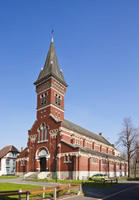You are in: Europe -> France -> Nord-Pas de Calais M... , and traditional search or Image Gallery will yield results of this site only
Nord-Pas de Calais Mining Basin
| Site number: | 1360 |
|
| Type of site: | Cultural | |
| Date: | 1700-1900 | |
| Date of Inscription: | 2012 | |
| Location: | Europe, France, Nord and Pas-de-Calais | |
Up to 75 images are shown here. Click on each for more details or on Image Gallery for more images.
Six official UN languages:
Arabic,
Chinese,
English,
French,
Russian,
Spanish
Other languages: Afrikaans, Aragonese, Armenian, Basque, Belarusian, Bulgarian, Catalan, Croatian, Czech, Danish, Dutch, Estonian, Finnish (Suomi), Georgian, German, Hebrew, Indonesian, Italian, Japanese, Latvian, Lithuanian, Macedonian, Malagasy, Marathi, Norwegian-Bokmai, Norwegian-Nynorsk, Persian, Polish, Portuguese, Scots, Swedish, Thai, Turkish, Ukrainian, Vietnamese, Waray-Waray
Other languages: Afrikaans, Aragonese, Armenian, Basque, Belarusian, Bulgarian, Catalan, Croatian, Czech, Danish, Dutch, Estonian, Finnish (Suomi), Georgian, German, Hebrew, Indonesian, Italian, Japanese, Latvian, Lithuanian, Macedonian, Malagasy, Marathi, Norwegian-Bokmai, Norwegian-Nynorsk, Persian, Polish, Portuguese, Scots, Swedish, Thai, Turkish, Ukrainian, Vietnamese, Waray-Waray
| Description: | Remarkable as a landscape shaped over three centuries of coal extraction from the 1700s to the 1900s, the site consists of 109 separate components over 120,000 ha. It features mining pits (the oldest of which dates from 1850) and lift infrastructure, slag heaps (some of which cover 90 ha and exceed 140 m in height), coal transport infrastructure, railway stations, workers’ estates and mining villages including social habitat, schools, religious buildings, health and community facilities, company premises, owners and managers’ houses, town halls and more. The site bears testimony to the quest to create model workers’ cities from the mid 19th century to the 1960s and further illustrates a significant period in the history of industrial Europe. It documents the living conditions of workers and the solidarity to which it gave rise. --WHMNet's description is from WHC Site, where additional information is available. | |
| Nord-Pas de Calais (French pronunciation: [nɔʁ pa d(ə) ka.lɛ] ( listen); Dutch: Noord-Nauw van Calais), Nord for short, is one of the 27 regions of France. It consists of the departments of Nord and Pas-de-Calais, in the north and has a border with Belgium. Most of the region was once part of the Southern Netherlands, within the Low Countries, and gradually became part of France between 1477 and 1678. The historical provinces now included in Nord-Pas-de-Calais are Artois, Boulonnais, Calaisis, Cambraisis, French Flanders, French Hainaut and portions of northern Picardy, and the regional nickname Bassin Minier or Meiners-Bassen (Miners' or Mining Basin in the region's two languages) derived from historically large mining deposits. These provincial designations are still frequently used by the inhabitants, which offers a sense of civic pride. --Wikipedia. Text is available under the Creative Commons Attribution-ShareAlike License. | ||
| Source: | http://whc.unesco.org/en/list/1360 | |
| Reference: | 1. UNESCO World Heritage Center (http://whc.unesco.org/en/list/1360). 2. Wikipedia. | |











